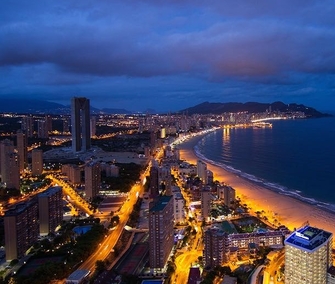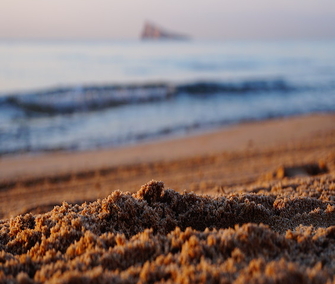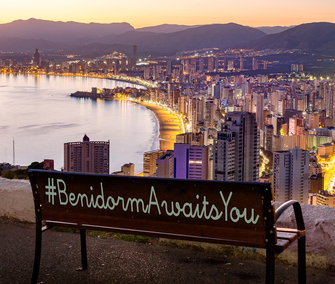

- Visit Benidorm,
- Discover Benidorm,
- History of Tourism in Benidorm,
- Plaza de la Constitución, a key ...
Plaza de la Constitución, a key point of the traditional Benidorm.
Also known as Plaza del Hostal, del Mesón, Mercado, Mayor and Calpí.
The Constitution Square, despite its small size, is a very popular leisure area in Benidorm nowadays. The activities of "bars and tapas" predominate, reason why some call it "the street of the wines". Share this function with the nearby streets, especially with those of Santo Domingo and the Passeig de la Carretera, so this area also receives the popular name of "zone of the Basques", since it is one of the favorites of the visitors that come from Euzkadi
However, this has not always been the case: in the 19th century and the first half of the 20th century it was the largest square in the town and it was the site of two very important economic activities for the time: it housed travelers in the hostel and he provided food to the population through his flea market. Towards the 1930s, the activity that is so characteristic today, began timidly. Vicente Llorca tells that in those years on Sundays and holidays, at the end of the Mass, the young people used to invite the marriageable girls "to a vermouth, very fashionable drink in the Corrillo Bar, recently opened in the Plaza of the Constitution, in front of the Hostel, or already in the one of La Marina ".
“I dedicate this entrance to HISTOBENIDORM to the history of this peculiar space of the traditional Benidorm.”
Francisco Amillo
Plaza de Mercado
Another name that has received the Constitution Square throughout the nineteenth and twentieth centuries was the “Mercado” o “Market square” because there the people sold the typical products of street markets, especially food.
In the documentation it is observed that the days of celebration of this market vary according to times. In 1914 Figueras Pacheco indicated that only one day a week was celebrated on Wednesdays, this being a tradition that continues now days: "The market is held on Wednesdays in the Plaza de la Constitución and Calle de la Alameda" [7] .
In 1937 the municipal records indicated that in order to facilitate the purchase of food the mayor proposed that the market that was held one day per week in the Constitution Square could be held every day of summer for one hour, from 7 at 8 o'clock in the morning: "a regulation hour during the summer to start the sale of merchandise in the Abastos Square of this town" [8].
There was also a municipal-owned fish shop in this square that complemented the supply of agricultural products. In the municipal records is collected how the City Council was concerned about its adequacy and cleanliness, because if they were neglected in this, can produced bad smells and a bad image for tourism.
It seems that afterwards the number of days a week in which the market was held was increased. Vicente Llorca Zaragoza speaks of Wednesdays, Saturdays and Sundays as the more important: "Normalized daily life, people went to the market located in the Constitution Square, as well as the nearby fish market, extending the service on Wednesdays and Sundays, days in which increased the number of suppliers from Callosa, Finestrat and Polop, standing out the Saturday in which María la Cuerda, moved from La Nucia to offer the "refined" public "botífarres i blanquets" that constituted a delight for the palate »[9].
When the tourist activity began to develop from 1950 onwards, life did not change suddenly, there was a transition from the traditional model to the current one. That was noted by the persistence of the daily market in the Constitution Square, extending also by some adjacent streets such as Santo Domingo, Martinez Oriola or San Miguel. Its end would come at the beginning of the decade of 1970 with the construction of the Municipal Market in Tomás Ortuño street.
For this period we have many photographs, highlighting the American Patty Stratton and the German Albert Becker.




























